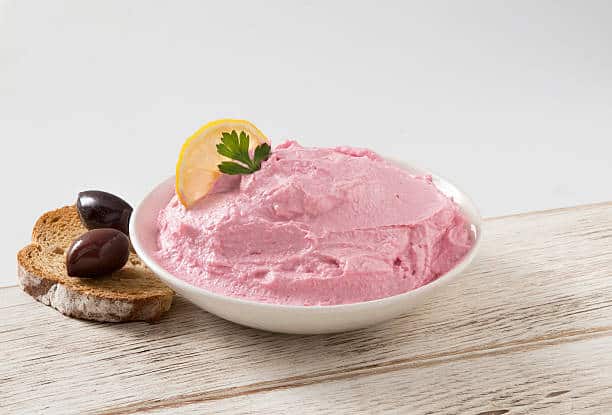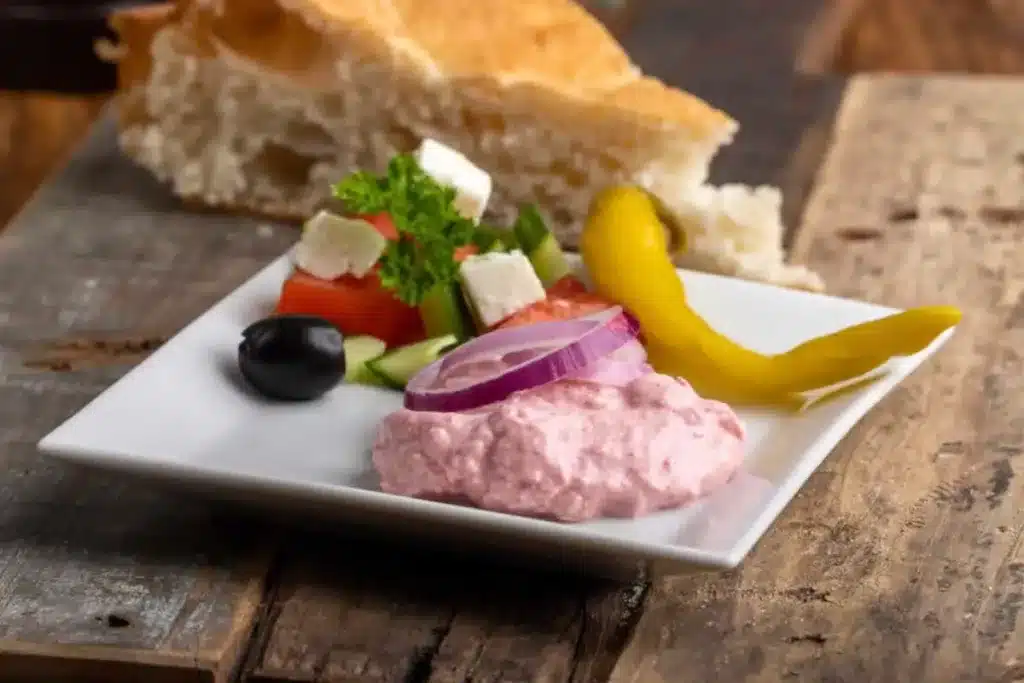
Homemade Greek surprise bread recipe
Discover our homemade Greek surprise bread recipe. Running out of ideas? Also discover our other recipes.

Tarama, this creamy preparation made from fish eggs, is a real invitation to a culinary journey. Immerse yourself in the world of marine flavors and discover everything you need to know about tarama, from the choice of ingredients to the best way to enjoy it.
To choose a good tarama, favor artisanal and quality products. Opt for a tarama prepared from fresh fish roe, such as cod or cod. The color of tarama can vary from pale pink to orange-red, depending on the type of eggs used. While purchasing, also check the texture which should be smooth and creamy. A high quality tarama will generally be prepared with natural ingredients, without artificial additives. Make sure the taste is balanced, without being too salty or too fatty.

Tarama is an excellent source of omega-3 fatty acids, which are beneficial for cardiovascular health. Omega-3s help reduce inflammation and improve cognitive function. Tarama is also rich in protein, essential for muscle building and tissue repair. It contains vitamins B12 and D, which play a crucial role in the functioning of the nervous system and maintaining bone health. Minerals such as iodine and phosphorus, found in tarama, are essential for energy metabolism and thyroid health. However, due to its salt content, it is recommended to consume taramasalata in moderation.
Tarama is generally enjoyed as an aperitif, spread on toast or blinis. It can also be incorporated into various recipes, such as pastas, salads, or dips. Accompanied by slices of lemon and a few sprigs of chives, the taramasalata reveals all its flavor. For a more sophisticated dining experience, use it as a garnish in verrines or canapes. Tarama goes perfectly with crunchy vegetables, such as carrot or cucumber sticks, for a fresh and light appetizer. It is important to store it in the refrigerator and consume it within the recommended time frame for best freshness. A good tarama can also be enhanced with a drizzle of extra virgin olive oil and a few grains of black pepper.
Tarama has its origins in Greek and Turkish cuisines, where it is traditionally consumed on special occasions and festivals. In ancient Greece, fish eggs were considered a delicacy, often reserved for royal banquets. Today, tarama has become a staple of Mediterranean tables, appreciated for its creamy texture and unique marine flavors. It is particularly popular during Orthodox Lent, a time when animal products are avoided except fish.

There are several variations of tarama, depending on the region and culinary traditions. For example, some prefer to add finely chopped onion or beet juice for an extra pop of color and flavor. Other recipes include fresh herbs like dill or parsley to enrich the taste. In France, tarama is often colored lightly pink with natural food colorings, while in Greece it is usually paler and prepared in a simpler manner. Modern variations of tarama may also include truffle infusions or citrus zest for a more sophisticated taste experience.
In modern cuisine, tarama is increasingly used in creative ways. Chefs like to incorporate it into innovative dishes such as fusion sushi, pasta sauces or pizza toppings. Its creamy texture and strong taste make it a versatile ingredient, ideal for adding a touch of luxury to various culinary preparations. It can also be used as a base for fish mousses or pâtés, offering a new dimension to starters and main courses.
To enhance the tarama, it is important to choose the right accompaniments. Besides the traditional blinis and toast, you can serve it with rye crackers, pita chips or even vegetable chips. Dry white wines, such as a Greek Assyrtiko or Sauvignon Blanc, pair perfectly with tarama, balancing the richness of the fish with their lively acidity. For a refreshing touch, accompany it with raw vegetables such as radishes, celery sticks or cherry tomatoes.

Discover our homemade Greek surprise bread recipe. Running out of ideas? Also discover our other recipes.

Discover our recipe for a Greek cheese and charcuterie platter. Running out of ideas? Also discover our other recipes.

Do you know everything about Lesbos? We explain all of this to you in our Growypedia through Growy and Tasty!
All our products come from small producers and craftsmen to guarantee their authenticity.
All our payments are secure thanks to our service providers who comply with the latest standards.
Our customer service is available to offer you the best possible support.
We deliver in Greece and internationally. It is possible to pick up your order in Crete.